Nestled within the lush, rolling hills of the Ouachita National Forest, 39 miles west of Little Rock, Lake Sylvia Recreation Area and Camp Ouachita stand as testaments to the natural beauty and historical significance of outdoor recreation in Arkansas. These locations, steeped in history, continue to attract visitors who seek solace in nature while connecting with the past.
Origins of Lake Sylvia
The development of Lake Sylvia began during the Great Depression when the federal government launched programs to provide jobs and improve public lands. In the early 1930s, the Civilian Conservation Corps (CCC), an initiative of President Franklin D. Roosevelt’s New Deal, was tasked with developing natural resources across the country. One of their projects in central Arkansas was the creation of Lake Sylvia.
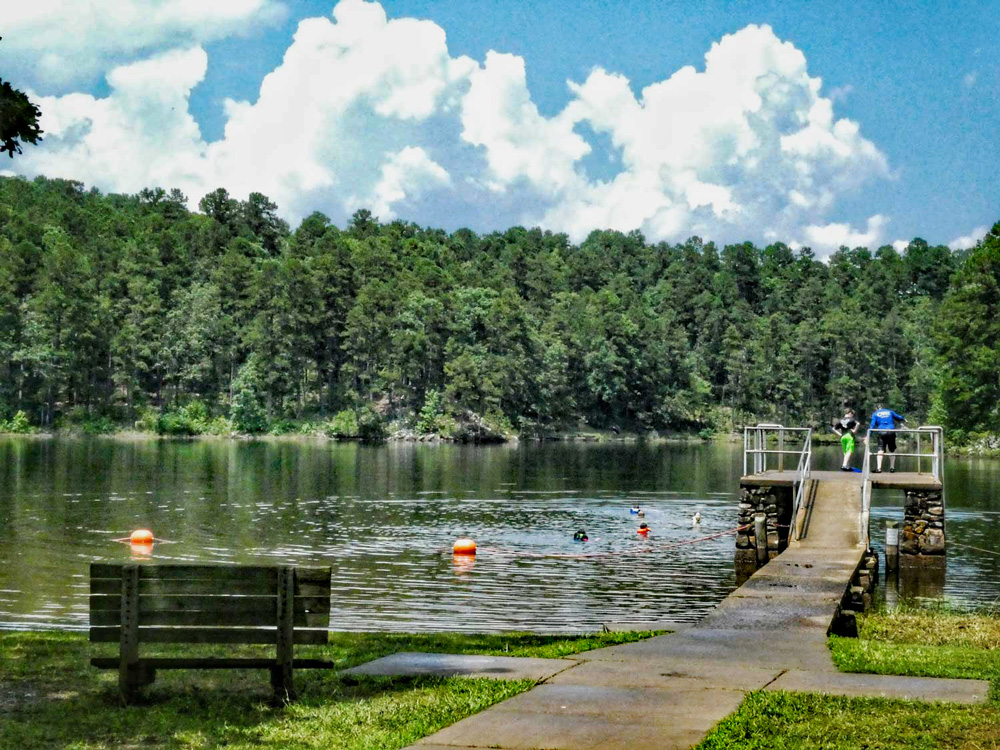
Completed in 1937, Lake Sylvia was formed by damming a small tributary of the Maumelle River. The CCC workers built a stone dam and developed recreational facilities, including picnic shelters and trails. These structures, characterized by rustic craftsmanship, were designed to blend harmoniously with the forest surroundings. Today, many of these original structures remain, offering a glimpse into the enduring legacy of the CCC.
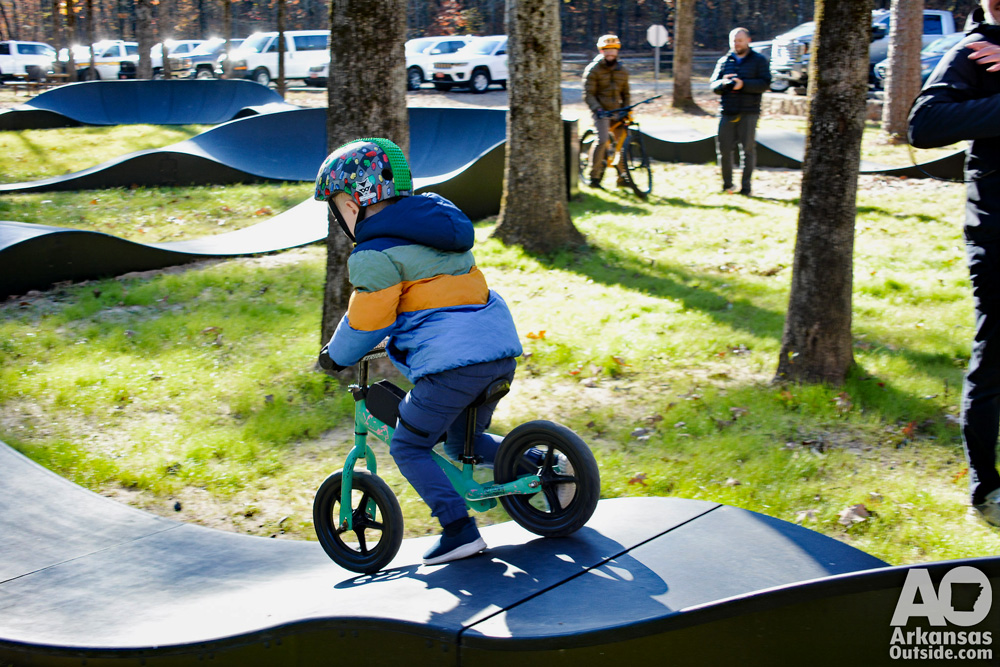
Camp Ouachita: A Haven for Girl Scouts
Camp Ouachita, located across the lake from Lake Sylvia Recreation Area, is the only surviving Girl Scout camp in the nation constructed by the Works Progress Administration (WPA) during the New Deal era. Built between 1936 and 1940, the camp served as a retreat for Girl Scouts, fostering outdoor skills and community spirit. Its rustic architecture, designed by Frank Ginocchio, features native stone and timber structures, including the iconic Ogden Hall, blending seamlessly with the natural surroundings.
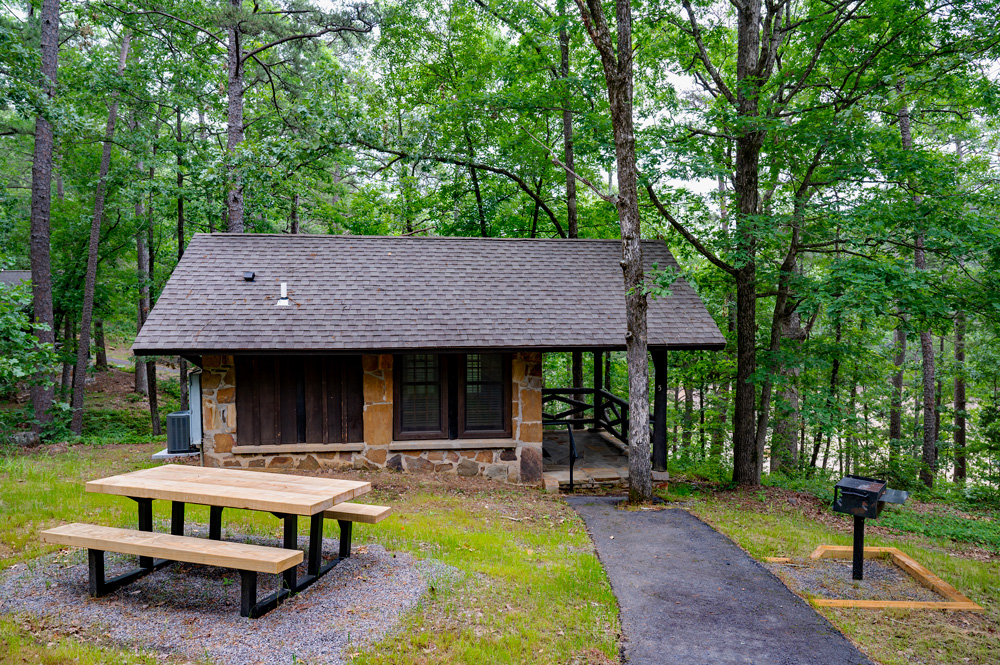
The camp was established through the efforts of the Little Rock Area Girl Scout Council, which secured WPA grants, private donations, and a special-use permit from the U.S. Forest Service. Dedicated in 1937 during the 25th anniversary of Girl Scouts, Inc., Camp Ouachita stands as a testament to the WPA’s impact on infrastructure and recreation during the Great Depression. Its addition to the National Register of Historic Places in 1992 highlights its architectural and cultural importance.
Challenges with water supply led to the camp’s closure in 1979, but preservation efforts since then have focused on restoring key structures for modern use. Today, Camp Ouachita remains a cherished example of WPA craftsmanship and a vital part of Arkansas’s history. More of the camp’s history is available at the video below.
Transition to Arkansas State Parks Management
In July 2021, the Arkansas Department of Parks, Heritage and Tourism (ADPHT) officially began managing the Lake Sylvia Recreation Area and Camp Ouachita as part of Pinnacle Mountain State Park. This transition followed a historic property lease agreement with the U.S. Forest Service, enabling Arkansas State Parks to oversee these sites and enhance year-round recreational opportunities for the public.
Under state parks’ management, the facilities are maintained and are currently being updated for contemporary recreational use while preserving their historic charm. Programs were developed to engage visitors, including interpretive tours of Camp Ouachita and events celebrating its heritage. Lake Sylvia is a favored spot for swimming, picnicking, fishing, and camping, drawing families from across the region.
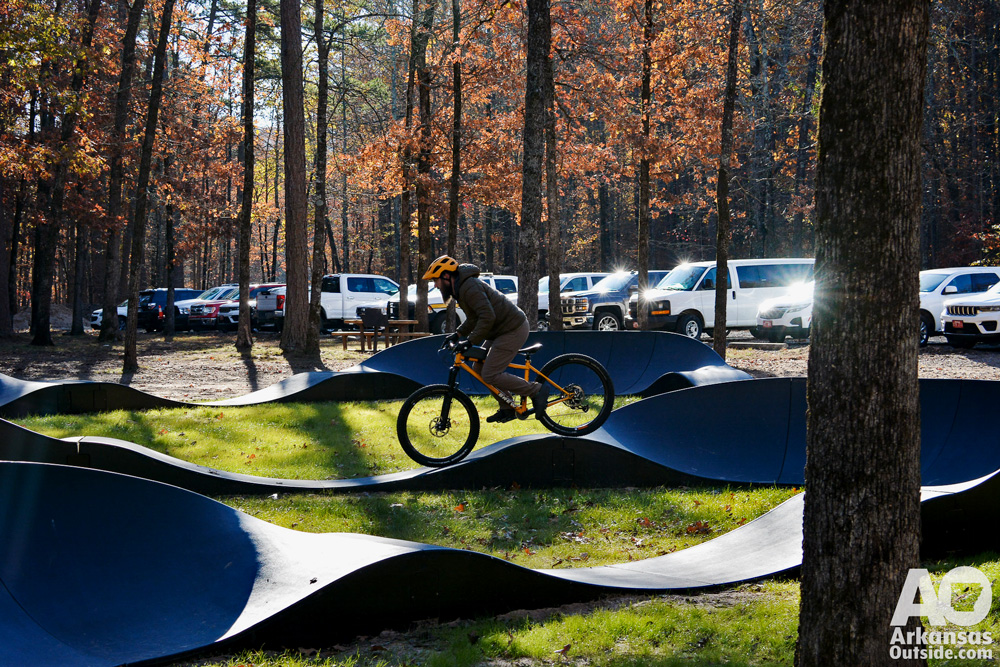
Another big change for the facilities is that they are now open year-round and there is no longer a fee for day-use. The existing cabins have been renovated and brought up to state park standards including heat and air. They are treated as camper cabins within the park system. The cabins and the campground have recently been added to the state parks reservation system making it easier to plan a vacation or weekend getaway.
The campground is expected to undergo a complete revitalization eventually though it did not make it into the current parks budget. The Trees in the Forest nature trail near the campground will be undergoing revitalization next year.
In recent years, partnerships with local conservation groups and state agencies have supported efforts to restore and enhance the area’s amenities, while staying true to its historical roots.
Outdoor Recreation in the Area
Besides swimming in Lake Sylvia, the park is currently working on building a kayak launch area and will be adding kayak rental. There is great hiking in the area including the Ouachita National Recreation Trail making this area a great stop on a 223-mile through hike between Oklahoma and Little Rock. There are also some beautiful trails with incredible views on the Chinquapin Mountain Trail.
Several distance running events are held at Camp Ouachita including three Arkansas Ultra Running Series events, The Full Moon 25k-50k, the Arkansas Traveller 100 Mile Run, and the Catsmacker Run. In the past, the area has also hosted the Slopperknocker Gravel Bike Race and the fRaid the Rock Adventure Race. It is a favorite area for runners and cyclists to train and enjoy.
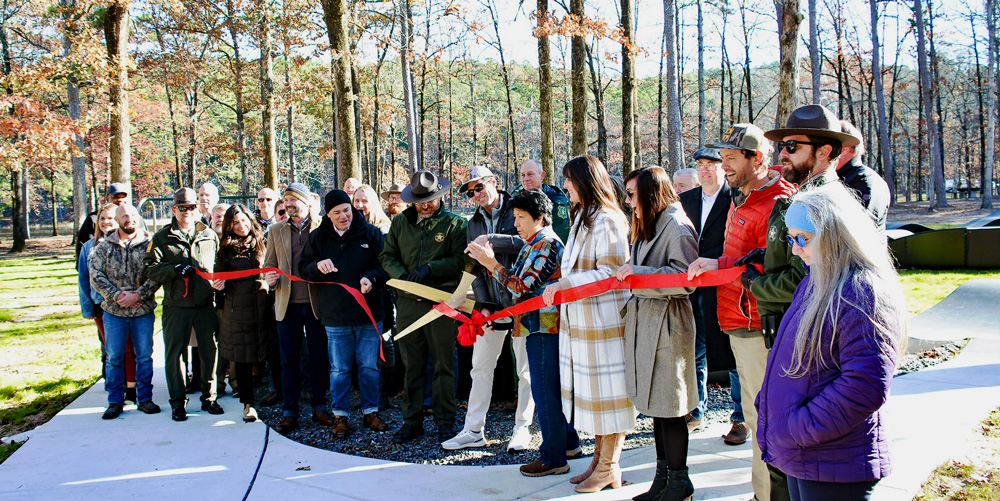
Challenges and Future Prospects
On Thursday, the Arkansas State Parks held a ribbon-cutting ceremony at Lake Sylvia to announce the formal opening of the new playground and bicycle pump track near the lake swimming area.
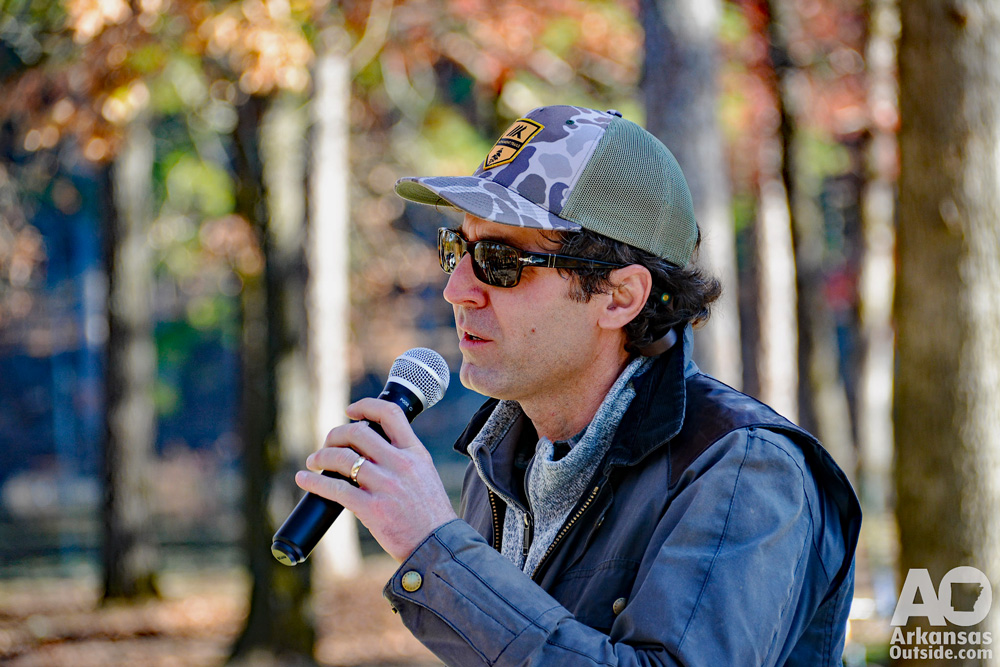
First Gentleman Bryan Sanders, Arkansas Department of Parks, Heritage and Tourism (ADPHT) Secretary Shea Lewis, Representative Mary Bentley, and other partners celebrated the dedication of a new playground and pump track at the Lake Sylvia Recreation Area. The ceremony emphasized the importance of creating accessible outdoor spaces for Arkansans while supporting conservation efforts. These new features include a modular pump track for cyclists of all ages and a fully accessible playground that replaced a deteriorating structure.

“This is more than just a playground or pump track—it’s an investment in the health, well-being, and joy of Arkansans,” said Lewis, who also highlighted Lake Sylvia’s role within the Maumelle Pinnacles Conservation Area.
Jeff King, deputy director of Arkansas State Parks, noted that the project reflects the power of collaboration, blending recreation and conservation to benefit communities and preserve the state’s natural beauty. You can watch all the speeches at the video below.






